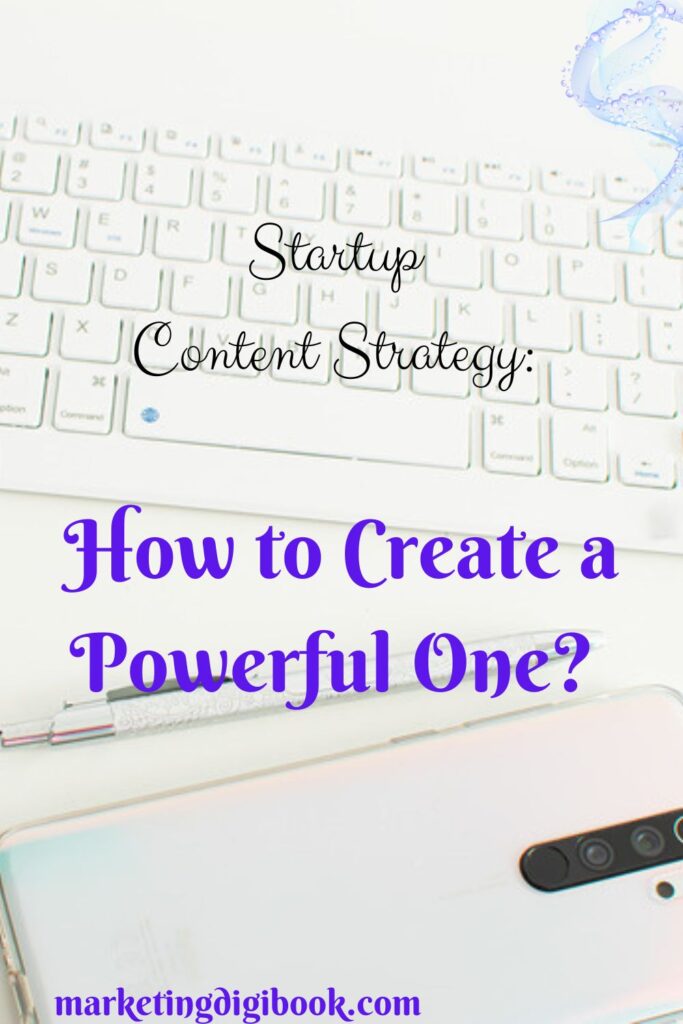Starting a business can be an overwhelming process for any entrepreneur, and having a content strategy in place is one of the most important steps.
However, startup companies often have limited resources when it comes to content marketing. This can make creating a successful content strategy challenging but certainly not impossible.
The key is to focus on what works best for your business and budget and make sure that the content you create aligns with your overall goals.
Here is a breakdown of some key steps for creating a content strategy for your startup.
What Makes a Reliable Startup Content Strategy?
A good content strategy will help you create engaging materials that attract potential customers and build your brand. It should also focus on creating valuable content that solves the problems of your customers and keeps them coming back.
For instance, if you’re a tech startup, your content might include tutorials on how to use your product or information about the latest industry trends.
As long as your content is relevant, informative, and entertaining, it will be more likely to engage your audience.
To give you a hand you can use templates made for content strategy.
Understand Your Target Audience
Understanding whom you are targeting with your content is essential for any successful content strategy. Knowing your target audience will help you create tailored materials that resonate with them at every step of their journey and build lasting relationships.
Think about the demographics of your target audience, such as their age, gender, and location. Understanding who they are, what are their pain points, and what they need to solve them will help you create content that meets their expectations.
To define your target audience, consider creating personas based on your ideal customer, which will help you craft content tailored specifically to their needs.
For example, if you’re targeting young professionals, you might create content about how your product will help them save time or money.
Define Your Goals and Objectives for Your Startup Content Strategy
The foundation of an effective content strategy is to define what you want to achieve with your content. Are you looking to attract new customers, build brand awareness, or promote your products or services?
Knowing your exact goals and objectives will guide you in conceiving content that is tailored to those objectives.
For instance, if your goal is to build brand awareness, you might create content that educates potential customers about your niche and the product or service you offer.
While you define your goals and objectives, it’s important to set realistic expectations. You should also keep track of the results of your content strategy so you can measure its success.
Set Measurable Goals
As a startup, you have to set measurable goals for your content and be aware of your tight budget. This will help ensure that you can track and measure the success of your content strategy.
Your goals should be specific, measurable, achievable, relevant, and timely (SMART). If your goal is to increase brand awareness, you might set a goal of increasing website traffic by 20% in the next six months.
Remember to set goals for your content. For example, you might set a goal of increasing the number of clicks on your articles or videos by 10%. This will help you measure which content resonates with your target audience and adjust your strategy accordingly.
Create a Content Calendar
Once you have defined your goals and objectives, it’s time to create a content calendar. A content calendar is the frame of planning and scheduling your content in advance.
It should include the type of content, the topics covered, when it is published, and who is responsible for creating it. Meanwhile ensuring that your content is aligned with your goals and objectives and is being created on time.
A good calendar should also include any deadlines and special events that may require content creation. For instance, if you’re launching a new product, you might create content to promote it around the launch date.
Let’s Make Your SEO & Content Work Better for Your Business
Analyze Your Results
Of course, it’s important to track and analyze the results of your content strategy. The purpose is to identify which content works best for your target audience and adjust your strategy in consequence.
You should also ask for feedback from customers to ensure that your content fulfills their requirements and that they find all the necessary info. Feedback will be the basis for creating more valuable content that resonates with them and increases your chances to reach the business goals.
Choose the Right Platforms
The next step in creating an effective content strategy is to choose the right platforms. As a startup, you need to make sure that your content reaches your target audience.
Think about where your customers are most likely to come across your content and focus on those channels. You may also want to consider using paid advertising to reach a wider audience if the budget allows for it.
With the right platform, you can ensure that your content reaches the right people and drives results. Some popular content venues include social media, blogs, and email newsletters.
Prepare All Marketing Assets
You need to prepare all marketing assets needed for your content strategy. Marketing collateral may include visuals such as logos and images, videos, templates for creating content pieces, and any tools or software needed to measure the results of your efforts.
In order to pop up in search results, optimize your site for search engines. Improve the user experience on your website, and keep an eye on its loading speed and technicalities to generate a positive experience for your visitors.
To make your website more effective and eye-catching, try some website design agencies such as Designrush. Hiring external help is another option to ensure your website is user-friendly and optimized for search engines.
Other marketing assets may include promotional materials such as flyers, banners, and other items that can be used at events or conferences.
By being organized and preparing all of your marketing assets in advance, you’ll be able to create a more effective content strategy.
Prioritize Keyword Research
Once you have all of your assets ready, it’s time to do some keyword research. It is one of the most important steps in creating an effective content strategy.
Identify which keywords are relevant to your brand and target audience and create content that is useful for your buyers and accomplishes all the requirements to rank.
A solid keyword research strategy should also include a competitor analysis to see what keywords your competitors are targeting. It’s a way to identify potential gaps in the market and create content that stands out and may outrank the competition.
Help Your Audience Find Your Content
You should always make sure that your content is easy for your target audience to find. Be anywhere your audience is present. Besides optimizing your website for search engines, creating a content distribution plan that includes channels such as email newsletters, social media posts, influencer marketing, etc.
Paid distribution is another option you can test if you have the budget. Paid ads can help you reach a wider audience, spread the word and drive more traffic to your content.
Diversify Content Formats
To cater to your audience preferences be ready to diversify your content formats. Such an approach may include videos, podcasts, infographics, and even virtual reality experiences.
By diversifying your content formats, you can make sure that you’re covering all bases and reaching a wider range of customers.
Blog articles, case studies, and webinars are also great content types for startups. With these formats, you can provide valuable information to your customers, showcase the expertise of your business and give them a solid reason to choose you.
Let’s Make Your SEO & Content Work Better for Your Business
Create Long-Form Content
Long-form content is an effective way to build trust with your customers. This type of content should cover topics in greater detail than shorter pieces like blog articles.
Some long-form content examples are eBooks, whitepapers, and webinars that provide valuable insights into a particular topic. It’s a great way to establish yourself as an expert in your industry and build trust with your customers.
When creating long-form content, focus on providing helpful and actionable information that your audience can use, such as step-by-step tutorials, tips and tricks, and case studies.
Publish a Case Study
Case studies are an effective way to showcase the success of your solutions. They can help you establish trust with customers, demonstrate how your solutions work, and show off your expertise in a particular industry.
When creating a case study, you should include an overview of the company, its goals and objectives, any challenges it faced, and results achieved. Try including metrics such as the number of new customers, new leads, increase in revenue, profits, and more.
Stay Flexible and Adaptable
It’s essential to stay flexible and adaptable when creating a content strategy. Trends in the industry can change quickly and you need to be ready to adjust your strategy.
You should always be open to trying new ideas and experimenting with different types of content. It is likely to give you an edge and stay ahead of the competition and create more engaging content for your target audience.
If you feel you need help with your content, try some strategy consulting services specialized in content.
Revise Your Strategy
Finally, you need to review and revise your content strategy regularly to make sure it remains effective. Analyze the results of your efforts and make adjustments where necessary.
For example, when you notice that a certain type of content is not resonating with your target audience, you can switch to something else. Enhance what works to stay on top of trends and ensure that your content remains relevant and produces results.
Conclusion
By crafting and implementing an effective content strategy, you offer your startup the best chance of reaching its goals and growing.
Developing the right mix of content will help you build brand recognition and drive more traffic to your website.
Invited guest author
Nina Walker is a web designer and psychotherapist based in Phoenix, Arizona, US. Passionate about digital marketing and content writing. After finishing a course for content writing, she became a part of the DigitalStrategyOne agency. She writes short stories and blogs for sites.


